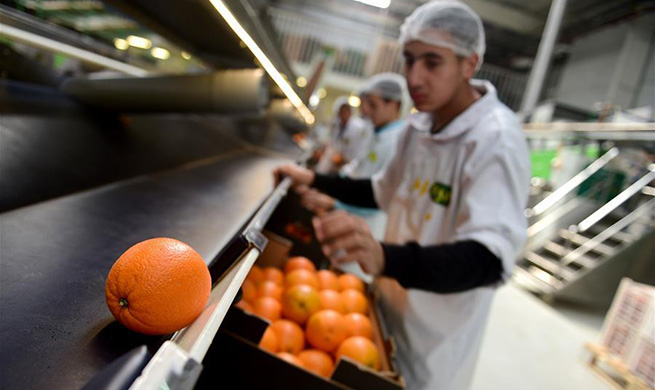MEXICO CITY, Jan. 31 (Xinhua) -- Each year at this time, a Tamale Fair kicks off the annual agricultural cycle in Mexico, and highlights the fusion over centuries between the country's pre-Columbian civilizations and European traditions brought over by the Spanish conquistadors.
Like many of Mexico's foods, the tamale traces its origins to pre-Hispanic times. For hundreds of years before the arrival of the Spanish, Mexico's indigenous communities relished this dietary staple, made of cornmeal stuffed with meats and sauces, then wrapped and steamed in corn husks.
While tamales can be part of the daily diet all year long, there is one day each year when eating tamales is a must: Feb. 2, Candlemas Day, one of the most important dates on the Christian calendar.
Tamales were already an essential part of indigenous religious celebrations in Mexico, including the start of annual rituals to guarantee a good harvest, so when the Spanish converted the Indians to Catholicism, the humble tamale also crossed over.
Today, Candlemas Day and its requisite menu serve to mark both the end of the Christmas holidays and a new agricultural beginning.
Homes, offices, schools, restaurants and any other place where people gather will have a tamale feast, called a "tamaliza" or "tamalada."
Over the past 26 years, Mexico City's National Museum of Popular Culture, which focuses on the country's ethnic diversity, has hosted a Tamale Fair featuring a wide variety of savory and sweet tamales.
Through Feb. 4, the museum grounds will offer tamales from various parts of Mexico, as well as other Latin American countries, including Bolivia, Cuba, Colombia, Guatemala, Honduras, Nicaragua and Venezuela.
Mexico has the most extensive selection, with 370 different kinds, from traditional tamales with pork, chicken, beef or vegetable fillings, over fruit flavors, to exotic varieties, including one filled with a type of ant cooked in an elaborate sauce made with two kinds of chilies.
To make this tamale from the southern state of Oaxaca, cooks first toast flying ants, locally known as chicatanas, and remove their wings before grinding and seasoning them with garlic, onion and avocado leaf.
Another unusual variety at the fair is the "zacahuil," considered "the King of Tamales" due to its size.
Typical of the Huasteca region of Mexico's Gulf Coast state of Veracruz, this tamale can weigh up to 60 kg and measure a meter and a half in length. One tamale of this kind can feed as many as 40 people.
In pre-Hispanic times, this mega-tamale was filled with boar or armadillo meat, since it was the Spanish who introduced pigs and cattle to the New World.
David Hernandez, head of educational services at the museum, says tamales and tamale-making are an essential part of Mexican cuisine that combines cultural practices and history.
After the tortilla, the second most common way to use corn in Mexico and much of Latin America is to make tamales, he said.
"There is evidence that Mexico's predominant cultures took corn to other regions of the Americas. They also took with them ways to cook maize," said Hernandez.
Mexican archaeological artifacts show the tamale was part of daily life for many indigenous cultures, in addition to being used in religious rites and as offerings in tombs.
"In the case of the Mayas, there are sculptures and paintings that incorporate the tamale in their images, from the classic era (roughly 250 to 900 AD) to the post-classic era (950 to 1500 AD)," said Hernandez.
















